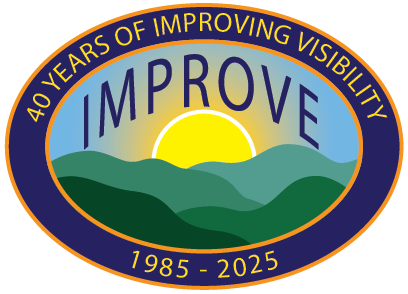Final Report – WHITEX
Winter Haze Intensive Tracer Experiment
Principal Authors: William Malm1, Kristi Gebhart1, Douglas Latimer2, Thomas Cahill3, Robert Eldred3,
Roger Pielke4, Roger Stocker4, John Watson5
Click on the title below to view PDF files of these documents:
Chapter 1 – Introduction (2069 kb)
Chapter 2 – Air Quality Climatology of the WHITEX Study Area (1544 kb)
Chapter 3 – Optical, Particulate, SO2 and CD4 Measurements (2208 kb)
Chapter 4 – Discussion of Data
4.1 – 4.2 Introduction and Temporal History of WHITEX Study Period (1384 kb)
4.3 Temporal History of CD4 at Receptors (2344 kb)
4.4 Statistical Summaries (1712 kb)
Chapter 5 – Light Extinction Budgets
5.1 Assumptions and Data Analysis (847 kb)
5.2 Preliminary Data Analysis (1240 kb)
5.3 Light Extinction Budget By Extinction Type (1174 kb)
Chapter 6 – Attribution of Sulfur and Visibility Impairment
6.1- 6.2 Introduction and Emissions (332 kb)
6.3 Deposition and Transformation Rates (1318 kb)
6.0 Assessment of Quantitative Attribution Techniques
6.6.1 Tracer Mass Balance Regression (2337 kb)
6.6.2 Differential Mass Balance(4417 kb)
6.6.3 Chemical Mass Balance(1520 kb)
Chapter 7 – Deterministic Modeling (1977 kb)
Chapter 8 – Climate of Extreme Sulfur Episodes
8.2 Extreme Sulfur Episodes During WHITEX (1086 kb)
8.3 Extreme Sulfur Events During November 1986 – March 1987 (717 kb)
8.4 – 8.6 High Sulfur Events During 1982 – 1986, Summary of Historic
Historic Weather Maps
Chapter 9 – Summary and Conclusions (2770 kb)
Appendices
3A Description of Sample Collection and Analysis (2048 kb)
3B Precision and Accuracy of CD4 and Measurement (694 kb)
3C Internal Accuracy and Precision of Particulate Data (2917 kb)
3D Particulate Concentration Intercomparison (1182 kb)
3E Precision and Accuracy of SO2 Measurements and Intercomparisons (519 kb)
3F Precision and Accuracy of Optical Measurements (1920 kb)
4A Disaggregation Procedures (198 kb)
6A General Mass Balance Model (797 kb)
6B Tracer Mass Balance Model Regression (TMBR) Model and Tracer Balance (TMB) Model (622 kb)
6C Differential Mass Balance Model (587 kb)
6D Chemical Mass Balance Receptor Model (1202 kb)
6F Upper Air Plots pages 1 – 20 (1411 kb)
6F Upper Air Plots Pages 21- 40 (1538 kb)
6F Upper Air Plots pages 41 – 61 (1528 kb)
Addendum
1.0 Review of the WHITEX Draft Report (669 kb)
2.1 Assumptions and Data Analysis Techniques (782 kb)
2.2 Preliminary Data Analysis (1625 kb)
2.3 Light Extinction Budget by Extinction Type(1296 kb)
2.4 Extinction Budget by Species (522 kb)
2.5 Time Variations in the Light Extinction Budget (2763 kb)
2.6 – 2.7 Comparison to Previous Studies at Grand Canyon and Summary (1086 kb)
5.0 Application of Tracer Mass Balance Regression to WHITEX Data (1676 kb)
6.0 Survey of a Variety of Receptor Modeling Techniques(3205 kb)
1National Parks Service
2Latimer & Associates
3University of California
4Colorado State University
5Desert Research Institute

